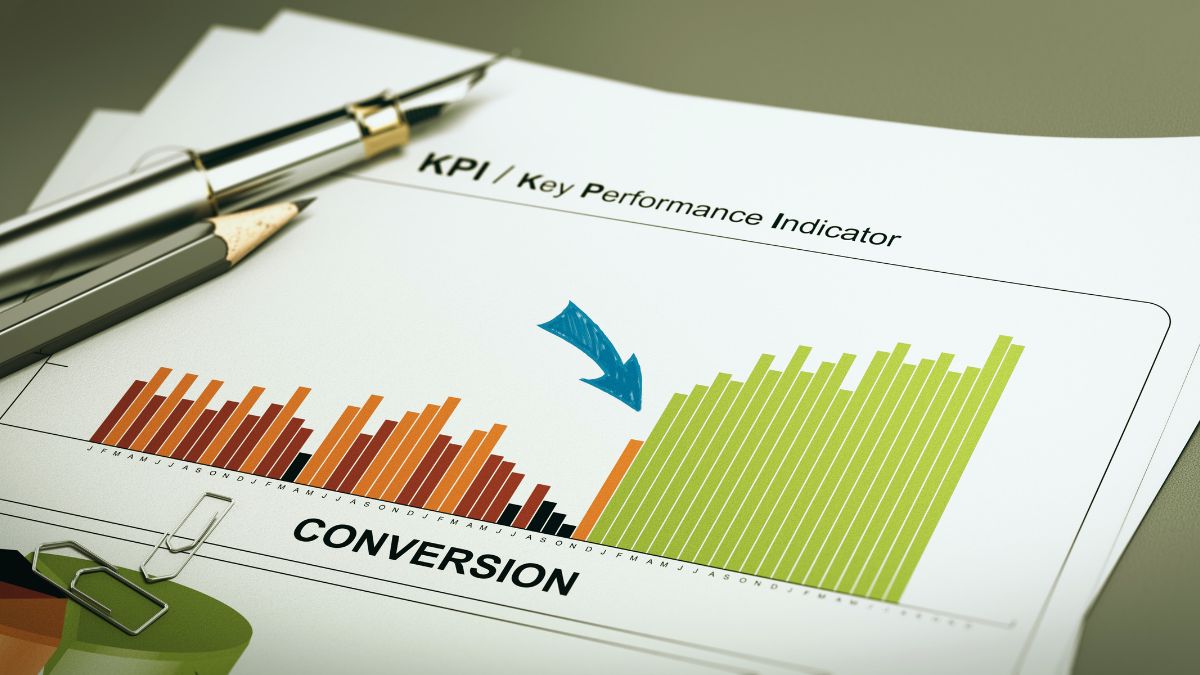Retiring at 40 is no longer a luxury reserved for the few. With careful planning and the right financial strategies, this ambitious goal can become a reality. This article presents 10 data-driven strategies to help you accelerate your path to early retirement and enjoy a life of financial freedom sooner than you might think.
Retirement at 40 is achievable with the right financial strategies and discipline. Start by defining your retirement goals to shape your financial plan and calculate your “retirement number” using the 4% rule to estimate how much you need to save.
Maximize your savings by creating a budget, eliminating unnecessary expenses and investing a significant portion of your income. Minimize costs by living a frugal lifestyle and prioritizing needs over wants. Boost your income with side jobs or part-time work that match your skills and interests.
Invest wisely in diversified assets such as stocks, bonds and real estate by taking advantage of tax-deferred accounts and compound interest. Pay off high-interest debt to free up income for savings, and build an emergency fund to cover 3–6 months of expenses to meet unexpected challenges.
Regularly review your progress, adjust your strategies and celebrate milestones to stay motivated. With determination and careful planning, early retirement and financial freedom can be within reach.
1. Define Your Retirement Goals

Before you embark on your journey into early retirement at the age of 40, it is important that you define your vision for this exciting chapter. What does “retirement” really mean to you? Is it about financial freedom, living out your passions, traveling the world, spending more time with your loved ones or a combination of these things?
Take the time to dream big and envision your ideal retirement lifestyle. Do you want to downsize and live a simpler life or maintain your current lifestyle while experiencing exciting new adventures? Do you want to volunteer, start a small business or simply enjoy the freedom to spend your days as you please?
Clearly defining your retirement goals is of the utmost importance. Not only will they give you direction and motivation, but they will also serve as the basis for your financial plan. Knowing your desired lifestyle and the associated costs will help you determine exactly how much you need to save and invest to realize your dream of early retirement.
2. Calculate Your Retirement Number

Before you can set a course towards retirement at age 40, you need a clear and defined goal. Enter: Your “retirement number” This critical number indicates the annual income you need to withdraw from your savings to maintain your desired lifestyle after you retire.
To determine this figure, you first need to accurately estimate your annual expenses in retirement. This includes essential costs such as housing, healthcare, food, transportation and entertainment. Remember to factor in potential inflation, as the cost of living is likely to increase over time.
A common rule of thumb for safe withdrawal rates is the 4% rule. It states that you can withdraw 4% of your retirement savings each year without significantly eroding your capital over a typical retirement period.
However, it’s important to remember that this is a general guideline that may not be suitable for everyone. Factors such as your investment portfolio, your risk tolerance and your specific retirement goals should be carefully considered.
To calculate your retirement number, divide your desired annual income in retirement by your chosen withdrawal rate.
3. Maximize Savings Rate

The cornerstone of any successful early retirement plan is a solid savings strategy. To accelerate your path to financial freedom at age 40, maximizing your savings rate is paramount. This requires taking a close look at your income and expenses, identifying areas where you can make savings, and investing a significant portion of your income into retirement savings.
Consider introducing a budget to track your spending habits and identify unnecessary expenses. Look for ways to reduce your housing costs, such as downsizing your home or moving to a more affordable neighborhood.
Reduce your discretionary spending on dining out, entertainment and non-essential purchases. Look for ways to increase your income through side hustles, freelance work or negotiating a raise at your current job.
4. Minimize Expenses

Aggressive spending reduction is a cornerstone of any successful pre-retirement strategy. By taking a close look at your spending habits and identifying areas where you can make savings, you can significantly increase your savings rate.
Start by creating a detailed budget where you record every penny you spend. This will give you valuable insight into where your money is going and help you identify unnecessary spending. Consider downsizing your living space, looking for more affordable housing options or even moving to a less expensive area.
Reduce your discretionary spending by cutting back on restaurants, entertainment and unnecessary subscriptions. Embrace a more frugal lifestyle by cooking at home more often, seeking out free or low-cost entertainment options and using public transportation whenever possible.
By carefully minimizing your expenses, you’ll have more of your income available for investment, and you’ll get closer to your early retirement goals faster. Remember that every Rupee you save brings you closer to financial independence.
5. Start a Side Hustle

One of the most effective strategies to accelerate your path to early retirement is to diversify your income streams. While your primary occupation provides a stable foundation, adding a side hustle can significantly increase your income potential and move you toward your financial goals.
The beauty of side hustles is their incredible variety. From freelance work and consulting to driving services, starting an online business or selling crafts and handmade goods, the possibilities are virtually endless. Choose a side hustle that suits your interests, skills and available time. Even a few hours a week dedicated to a side hustle can add up to significant extra income over time.
What’s more, part-time jobs offer valuable benefits that go beyond financial gain. They can teach you new skills, expand your professional network and even lead to new career opportunities. By embracing the entrepreneurial spirit and exploring the potential of a side hustle, you can significantly increase your earning potential and accelerate your path to a comfortable and early retirement.
Want to read more about more passive income sources, you can read these:
- 10 Simple Businesses You Can Start Today (No Experience Needed!)
- 10 Passive Income Ideas for Financial Freedom (2025)
6. Invest Wisely

Investing wisely is paramount to achieve your goal of retiring at 40. Time is your most valuable asset, and harnessing the power of compound interest is crucial.
- Embrace the stock market: Historically, the stock market has delivered substantial long-term returns. Consider investing in a diversified stock portfolio, such as index funds or exchange-traded funds (ETFs), to benefit from market growth while minimizing risk.
- Maximize the tax benefits: Take full advantage of tax-advantaged retirement accounts such as 401(k)s and IRAs. The extra employer contributions to 401(k) plans are essentially free money, so be sure to contribute enough to maximize this benefit.
- Diversify your portfolio: Don’t put all your eggs in one basket. Spread your investments across different asset classes, such as stocks, bonds and real estate, to reduce overall risk.
- Consider real estate: Real estate can offer both income opportunities and appreciation potential. Consider options such as rental properties or real estate investment trusts (REITs).
- Review and rebalance regularly: Review your investment portfolio regularly and adjust as needed to maintain your desired asset allocation and risk tolerance.
By implementing a clearly defined investment strategy and making consistent contributions to your retirement accounts, you can significantly accelerate your path to early retirement and achieve financial freedom sooner.
7. Pay Off High-Interest Debt

High-interest debt, such as credit card balances, can be a significant obstacle on the road to early retirement. These debts act as financial anchors that eat away at your income and prevent you from saving and investing aggressively. The interest payments you make to your creditors are essentially money thrown out that you could be using to accelerate your retirement savings.
Eliminating high-interest debt is paramount. Consider strategies such as the “avalanche method” (pay off the highest interest rate debt first) or the “snowball method” (pay off the smallest debt first to gain momentum).
By aggressively tackling high-interest debt, you’ll free up a substantial portion of your income to put toward retirement savings, which will greatly accelerate your progress toward your early retirement goals.
Read this : 9 Proven Ways to Pay Off Debt Faster and Stress Less About Money
8. Build an Emergency Fund

Before you can even dream of retiring at 40, you need a solid financial foundation. This starts with building a solid emergency fund. Life has its pitfalls – a job loss, unexpected medical expenses or even a sudden car repair can wipe out your retirement savings if you’re not prepared.
An emergency fund is your financial safety net, giving you a cushion for unforeseen circumstances.
Save 3-6 months of your living expenses in an easily accessible account, such as a high-yield savings account or money market account. This readily available cash reserve will prevent you from having to dip into your long-term investments in an emergency and ensure that your retirement savings stay on track.
By prioritizing the establishment of an emergency fund, you not only ensure your financial stability, but also reduce stress and anxiety related to unexpected financial challenges. This crucial step will give you peace of mind that you can pursue your early retirement goals without the constant fear of unforeseen financial setbacks.
9. Track Your Progress

Early retirement requires consistent effort and tireless dedication. Tracking your progress isn’t just about monitoring your finances, it’s about staying motivated, recognizing opportunities for improvement and ensuring you’re on track to meet your pre-retirement goals.
Regularly reviewing your financial statements, investment portfolios and spending habits will allow you to identify areas where you may be falling short or exceeding your expectations. This ongoing assessment gives you valuable insight into the effectiveness of the strategies you have chosen and allows you to make any necessary adjustments to your plan.
Consider these strategies for effective performance monitoring:
- Utilize personal finance software: Tools like Mint, Personal Capital or YNAB can automate data entry and provide comprehensive overviews of your income, expenses and net worth.
- Set realistic milestones: Break your long-term goal of retiring at 40 into smaller, more attainable milestones. Celebrate each milestone you reach to stay motivated.
- Review your progress annually: Schedule an annual review of your retirement plan to assess your progress, re-evaluate your goals and make any necessary adjustments based on your current circumstances.
- Document your journey: Keeping a financial journal or blog can help you track and document your progress over time.
By consistently tracking your progress and making any necessary adjustments, you’ll stay motivated, maintain discipline and increase your chances of realizing your dream of early retirement.
10. Stay Motivated
The path to early retirement can be a marathon, not a sprint. It requires consistent effort, discipline and unwavering motivation to stay on course. Life casts its shadow ahead, and it’s easy to get distracted or lose sight of your long-term goals.
To keep your fire burning, build a strong support system. Share your goals with friends, family or like-minded people. Joining online communities or attending financial workshops can provide valuable insight and encouragement. Regularly envision your ideal retirement lifestyle – picture yourself traveling the world, pursuing hobbies or spending quality time with loved ones.
Celebrate your milestones along the way, no matter how small they may be. Whether it’s paying off a large debt, reaching a new savings goal or simply sticking to your budget for an entire month, recognize and reward your progress. This positive reinforcement will motivate you and spur you on to continue on your path.
Finally, remember that setbacks are inevitable. Don’t let the occasional slip-up deter you from your overall plan. Learn from your mistakes, adjust your course if necessary and get back on track. To realize your early retirement dreams, it’s important to keep a positive attitude and focus on your long-term vision.
By building a strong support system, celebrating your milestones and maintaining a positive attitude, you can stay motivated and achieve your early retirement goals.

